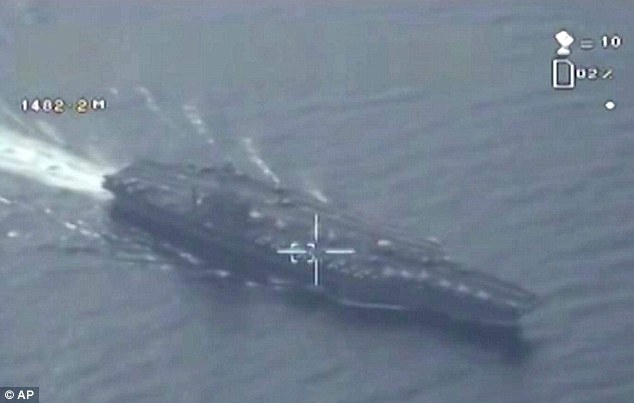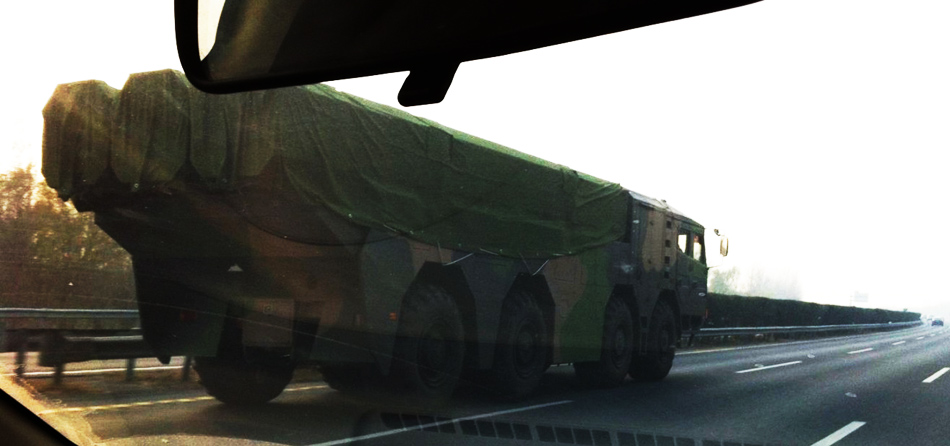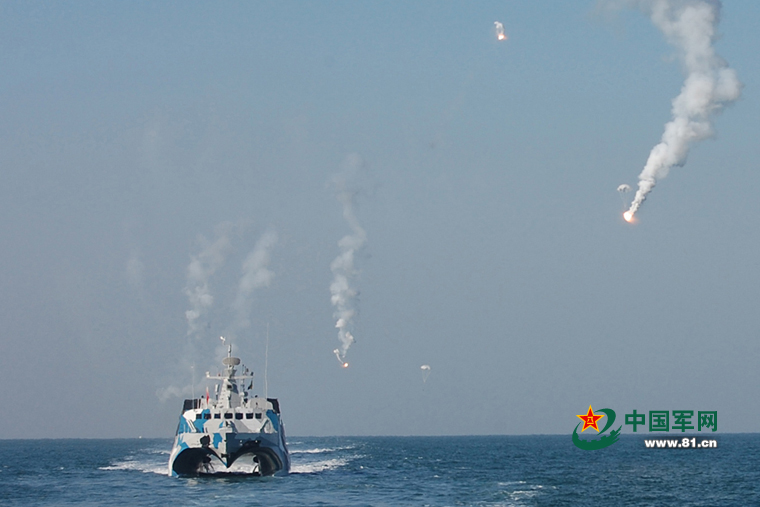gambit
PROFESSIONAL

- Joined
- Apr 28, 2009
- Messages
- 28,575
- Reaction score
- 148
- Country
- Location
Was a private showing. Invitations only. Sorry...I just missed this box office movie, damn.
Follow along with the video below to see how to install our site as a web app on your home screen.
Note: This feature may not be available in some browsers.

Was a private showing. Invitations only. Sorry...I just missed this box office movie, damn.
put on pirateba* plzWas a private showing. Invitations only. Sorry...

I agree with everything you said. And I agree that navies have their specific use regardless of where the technology goes. I am also sure there will eventually be weapons to counter ASBMs like higher power laser defense and etc.In every weapons development program in any country, two complementary issues exists:
- Capabilities-based
- Threat-based
To be capabilities-based mean the assessment takes the current technology level as priority over threats and the program moves from there.
To threat-based mean the assessment takes a more predictive path, hence higher risk of being wrong, and the prediction takes priority over the current technology level.
No weapons system is completely one or the other. And I will give a few examples...
The machine gun was capabilities-based. Everyone knows that in war, soldiers always seeks to numerically overwhelm the other side in order to increase the odds of winning the war. So the threat is a given, meaning it is common to any army in any situation. The question becomes how can we leverage the current technology base to create a gun with a new capability -- rapid firing -- to mitigate the situation of one being numerically inferior. In other words, the machine gun is a 'force multiplier' to either equalize the disparity or to overwhelm the other side in terms of bullets delivery.
The gun-less F-4 was a threat-based program. Not every military have an air arm, and even if a military have an air force, its hardware may not be the equal to mine. That mean the threat is unique and usually immediate. The US assessed the threat as highest priority and used its current technology level to create an all-missiles air-air fighter. Unfortunately, the US overestimate its technological savvy and the result was a disaster. The cannon ended up being installed on the F-4 and later fighters.
Low radar observability is a program that has near ideal balance between capabilities and threat assessments. We assessed the current threat and found that our technology level was fully capable of meeting the threat, current and future.
Landlocked countries do not have navies, so this missile seems to be a threat-based program. The threat is real and immediate, but the weapon is not anti aircraft carrier ballistic missile but anti SHIP ballistic missile. The weapon program is specific at one level, against waterborne targets, and general at another level, ship but not aircraft carrier.
The DF-21D have yet to definitively prove itself to be any of the above three situations but in my opinion, China seems to be underestimating the US Navy on how we employ our carrier fleet and overestimate her current technology level to produce a weapon that can challenge the ship, not just the aircraft carrier. In other words, the DF-21D is in danger of being the equivalent of the gun-less F-4.
That does not mean we are careless with our carrier fleet. Of course we will take cautious measures but in order for you to render my carrier tactically and strategically ineffective, the DF-21D would have to turn the carrier the way of the battleship.
As a related topic, the battleship did not go away because of the aircraft carrier but because navies, even from wealthy countries, found that maintaining two types of fleet, one with the aircraft carrier as main weapon platform and one with the battleship as main weapon platform, was financially prohibitive. The US Naval Surface Fire Support Association have been for yrs calling for the return of the battleship.
United States naval gunfire support debate - Wikipedia, the free encyclopedia
Unlike aircrafts that can abort a mission because of weather, once fired, the cannon round have no choice but to continue to its target. Back in the Vietnam War, the North Vietnamese refused to negotiate unless the USS New Jersey is removed from the theater. In Desert Storm, Iraqi Army POWs revealed that they were more afraid of the continuous cannon fire than from periodic strike aircrafts. They did not know of the USS Iowa but they can tell the difference between a descending cannon round vs a falling bomb.
The aircraft did not do away with the ship. The aircraft carrier did not do away with the battleship. The submarine did not do away with the surface fleet. So far, history have not been kind to anyone who claimed he can do this or that to the ship.
On the other hand, for its young life so far, the US have been far more successful than any other country, including Nazi Germany, at successfully meeting the challenges of the unpredictability of threat-based weapons platforms that continuously revolutionize warfare.
@gambit This is exactly what I'm trying to say. It doesn't mean that ASBMs will defeat a carrier group. They will simply make them ineffective and costly to use."And Harry Kazianis is not alone in offering such an opinion," Ischenko recalled. Also last month, in an op-ed for Politico, retired US Navy Captain Jerry Hendrix, a defense analyst for the Washington-based Center for a New American Security, suggested that the golden age for US carriers ended the moment when China and Russia began introducing long-range coastal missile systems into the ranks of their militaries.
"Hendix," Ischenko writes, "is convinced that in case of war, the capabilities of Russian and Chinese anti-ship cruise, ballistic missile and air defense forces would force US Navy carrier strike groups (CSGs) to stay hundreds or even thousands of kilometers from the enemy's coast, which would make strikes from their carrier-based aircraft against ground targets ineffective. Additionally, any CSG movement is easily observable from space, enabling the US's opponents to position their countermeasures ahead of time."
"The arithmetic here is simple: the main strike capability of the contemporary US Navy consists of its air wing, consisting of 30-40 F/A-18E/F Super Hornets. The combat radius of these aircraft is about 800 km. For the Super Hornets to able to even threaten to conduct air strikes against targets on the shores of enemy territory, they would have to take off 400 nautical miles from their targets."
"However," the analyst continues, "if the US Navy CSG were to attempt to make it to say, the Russian shore, it's unlikely that it would reach its destination, because, far from its target, it would be attacked by the Tu-22M3, a supersonic long-range bomber equipped with the Kh-22 anti-ship missile, designed back in the Soviet period specifically for use against aircraft carriers."
Read more: America's Newest Aircraft Carrier: A '$15 Billion Floating Graveyard'?
We are talking about land based attack on Navy using ASBMs and Cruise missiles not using navy against US navy. Iran doesn't really have any blue water navy to begin with.
With this weapon in our arsenal. All Chinese, Russian and Iranian warships can be easily sunk.

The aircraft did not keep navies from making amphibious landings -- D-Day. WW II was the first that fleets fought without seeing each other thanks to the aircraft, nevertheless, the fleets continued towards each other after they launched their aircrafts. Same idea on land. Artillery did not deterred formations of troops from heading towards each other, even from when they started out with horse drawn smooth bore mortars....any reasonable military leader would pull his fleet out of ASBMs reach at least until he find out how the enemy will use them and how accurate and effective they are.

US aircraft carriers are no longer the ultimate deterrent amid new technology | Daily Mail Online
The Center for a New American Security says the US relies on old tactics
By James Wilkinson For Daily Mail Online
- Those tactics make heavy use of aircraft carriers, which can be taken down with a combo of new weapons, tech and tactics deigned to trap carriers
- These 'area denial' systems force carriers to choose between fighting at a distance, where they are less effective, or closing in and risking attack
- 'Such an attack would be difficult - if not impossible - to defend against,' report warns
- China is 'the pacing threat' because of its technological developments
Published: 11:42 EST, 23 February 2016 | Updated: 19:25 EST, 23 February 2016
An obsession with aircraft carriers may end the the United States' naval dominance if military leaders don't change their ways, a report warned today. It says China, Russia and other countries have 'increasingly lethal and precise' weapons and tactics that can destroy carriers, breaking the backbone of the Navy.
Aircraft carriers are at the core of the Navy's arsenal. Not only are the fearsome juggernauts incredibly powerful and difficult to take down, there are also many of them: ten in active service. That's the exact same number of active carriers that every other country in the world has, combined.
But reliance on the behemoths has made the navy complacent, and in serious danger of being taken down by new weapons and tactics displayed by other countries, according to Red Alert: The Growing Threat to U.S. Aircraft Carriers, a report released by bipartisan think-tank Center for a New American Security.

Threatened: Aircraft carriers like the Harry S Truman (pictured) are the backbone of the US Navy, but other countries like China and Russia, have ways to disable or even annihilate carriers in combat, a report says

Killer: This DF-21D missile, shown during a parade in Beijing last year, is said to be a 'carrier killer' and would be used as part of the 'area denial' tactics, which block off certain areas to carriers for fear of obliteration

Deployed: China's HQ-9 missile launchers were identified in the report as being an area-denial threat, and were deployed onto a disputed island in the South China Sea this month
The core problem that the US Navy faces, the report says, is that other countries are perfecting 'area denial' methods of blocking off combat areas so that US carriers and their planes can't get close enough to fight effectively without suffering severe damage or even destruction.
They're doing that with newer aircraft, drone technology, submarines and even carrier-busting super missiles that have been developed in recent years. Last month, Iran showed off secret drone footage of the 18-year-old US carrier Harry S Truman.
The newest US carrier currently in active service is the nine-year-old George HW Bush. The oldest is the Nimitz, which took to the sea in 1975.
The US is currently constructing two more carriers, the Gerald R Ford and the John F Kennedy, which will be launched this year and in 2020, respectively. A third, the Enterprise, is scheduled for 2025.
But, says the report, the danger is more immediate. China is 'the pacing threat' right now, with two carrier-busting missiles - the DF-21D and DF-26 - that 'represent a significant threat to the carrier,' being able to take down ships and even reach Guam, a US territory about 2,000 miles away from the Chinese coast.
And Beijing showed willingness to set out areas of strong control around its borders with weaponized artificial islands last year, while placing HQ-9 anti-aircraft missiles - a type specifically identified in the report - on the disputed Woody Island in the South China Sea earlier this month.
That's especially dangerous to US carriers right now because current tactics see them sailing closer to battles than they used to, so that they can send out multiple short-term air attacks rather than relying on their long-distance weapons.

Parade: This military parade, held by Beijing in commemoration of WWII, was a show of Chinese military might, with many missile launchers on display

Growler: Russia deployed its SA-21 'Growler' anti-aircraft missiles to Syria last year, giving them coverage over the entire country and much of the eastern Mediterranean. Such weapons are essential for area denial

Drone: The USS Harry S Truman was secretly filmed by an Iranian drone last month, with footage being broadcast on Iranian television
The new weapons owned by China and other countries, could be used along with submarines, drones and other armaments designed to restrict the movement of carriers and 'launch a saturation attack against the carrier from a variety of platforms and directions. Such an attack would be difficult - if not impossible - to defend against.'
Russia is also named as a threat in the report, which points out that it made much of the technology used by China, as is Iran. All three countries are noted to be building up arms that can 'place constraints' on US carrier operation.
In November last year, Russia deployed its high-tech SA-21 'Growler' anti-aircraft missiles to Syria, allowing them to target planes over the country and much of the eastern Mediterranean - exactly the kind of weapon that could be combined into an area-denial attack.Solutions given by the report include increasing the distance at which aircraft on the carrier can travel before fighting, shifting money away from carriers and towards submarines and other underwater vehicles, and focusing on future tech like the US Navy's railgun, which can fire shells at seven times speed of sound.
Regardless, says the report, the US needs to quit its obsession with carriers 'and explore innovative options for future operations and force structure.
'If the United States is to maintain its military superiority well into the future, it cannot afford to do otherwise.'

If all you wanted is picking a fight to unleash your inner fury, you can doyou can dream, its free of charge.
you can dream. its free of charge.
 , its free of charge.
, its free of charge.






